#longivity
Explore tagged Tumblr posts
Text
#gwilda#wiyaka#mission#evolution#radio#TV#Aly#Cohen#medical#integrative#science#health#awareness#chemicals#toxins#longivity
0 notes
Text
Stress
HelloToday while reading few comments on stress, it came in my mind, which I am trying to share …Everything whatever comes into existence ,it always comes with last day of it’s existence.When child takes birth, he comes with a death tag.It is with everything.Negativity and positivity are two sides of a coin. It is true with each and every emotions,seasons etc.If we will have negativity it will…

View On WordPress
#afraid#agelifeourthoughts#agitated#angry#betterhealth#deepbreath#gratitude#have faith#karma#longivity#shades#stress#happiness
0 notes
Text
FINDING PURPOSE, CRUCIAL TO BRAIN HEALTH
Having a sense of purpose in life is often associated with improved mental health and emotional well-being. However, recent research suggests that having a purpose in life may also have a significant impact on physical health and longevity. Numerous studies have shown that individuals who report having a clear sense of purpose in life, tend to have lower rates of chronic diseases, such as heart…
0 notes
Text
Sustainable Furniture: Sabai
Sabai about:
[...] In 2019, [Phantila] Phataraprasit co-founded Sabai—a Thai word that roughly translates to comfortable or relaxed—with business partner and college friend Caitlin Ellen.
[...] “The core of why we wanted to start Sabai is to make sustainable furniture that was accessible to people in our demographic, knowing that we are part of an age group that cares the most about this and wants to purchase according to those values, but are limited by things like budget, lifestyle and convenience,” she says.
Sabai CEO interview:
[Phataraprasit]: [...] We started an Instagram account that served as a great tool to leverage our community to understand what they cared about. When we started the design process, we would always go back to the Instagram community and poll them on, "What do you use your couch for?" "Do you like wide arms?" "Do you like thin arms?" It seems so simple in terms of, obviously, a couch is for sitting, but the insights that we received from that were helpful in informing the design process."
[...] It was definitely difficult for two relatively young women who had never started this type of company before and in a relatively traditional space to find any factory that was willing to work with us and basically take a bet on us. [...] When we finally did find a manufacturer who wanted to work with us, that was amazing, [...], but for us, we [...] had to find the sustainable alternatives to every component of the product so that was definitely a whole process in and of itself.
Sabai Materials blog post:
[...] OEKO-TEX certified hemp fabric is used in our Evergreen slipcovers [...] We wanted to ensure we were using [natural fibers] that uses less water than the cotton and linen options we’ve seen offered.
In place of traditionally used polyester upholstery fiber, we are using a natural fiber material made from a mix of coconut fibers and natural rubber wherever possible. The wooden legs are finished in a water based finish and the frame construction uses a non-toxic, solvent free glue.
[Sabai furniture] are designed to be assembled and disassembled easily with standard hardware and tools. Second, both seating collections are made to be repaired, individual parts can be purchased to replace in case of damage and cushion covers and slipcovers can be replaced to ensure the longevity of the product.
B Corp status of Sabai:

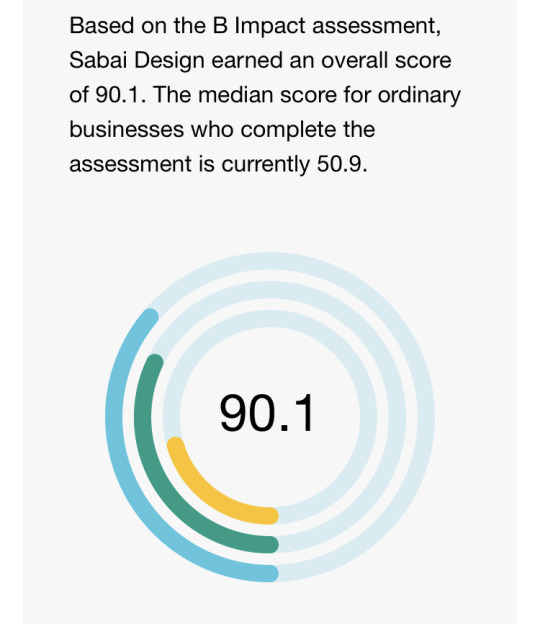
Sabai third-party product review:
#found this while considering shopping for a new couch#i think i might just invest in getting mine reupholstered/framed fixed to extend its longivity but#found this company in my search (for future reference) for sustainable furniture thats not necessarily second hand#my greens#sabai#sabai furniture#aapi#sustainable economy#sustainable furniture#furniture#interior design#non toxic#sustainable industry#women owned business#home health#green link
1 note
·
View note
Text
The brackets are here!

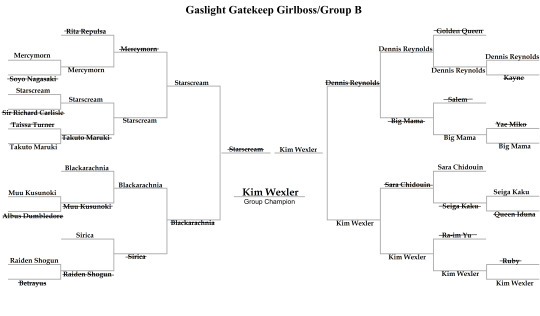
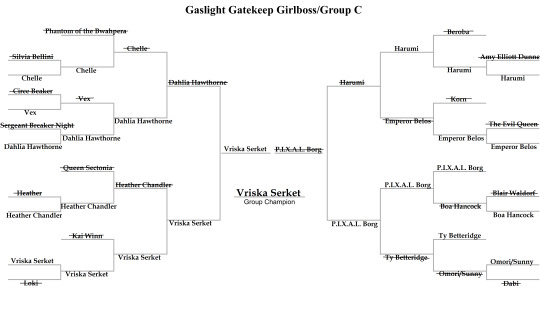
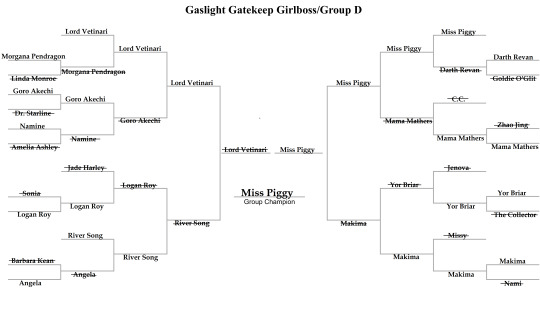
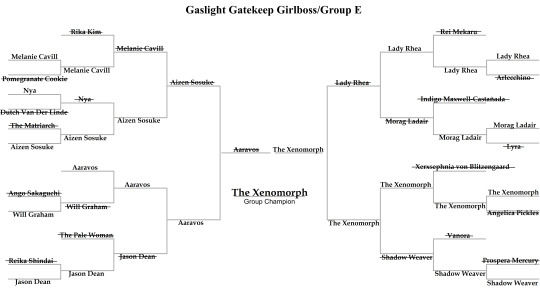
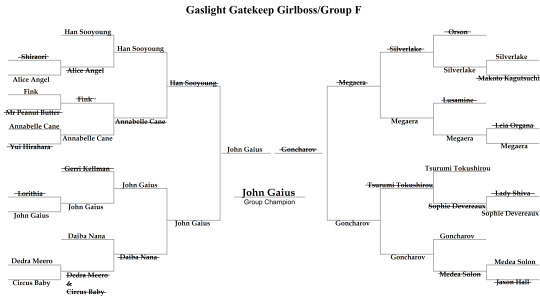

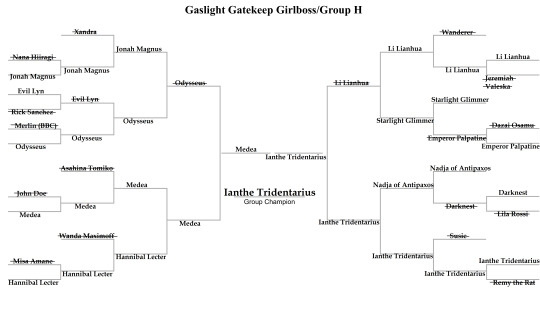
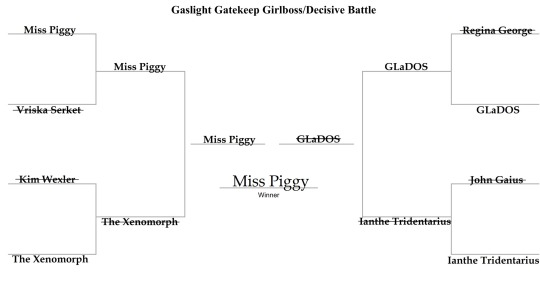
So with 25 characters per group some randomly lucky ones got to the second round immediately for they defeated their nonexistent opposition
I decided to use only one variant of name because otherwise table would be unreadable (also I wanted you to look at some of them and be confused who exactly they are so you could be surprised when the poll drops) except for one character from two different fandoms who would be indistinguishable without clarification, but don't worry, every duel would have a sufficient (provided) description of both sides.
Having whole week dedicated solely to one round of one group leaves us with just the first round for two months, so despite longivity of each battle being one week we'll have a new batch of fights every 3-4 days
And may the best win!
Group A polls ⏹⏹⏹⏹⏹
Group B polls ⏹⏹⏹⏹⏹
Group C polls ⏹⏹⏹⏹⏹
Group D polls ⏹⏹⏹⏹⏹
Group E polls ⏹⏹⏹⏹⏹️
Group F polls ⏹⏹⏹⏹⏹️
Group G polls ⏹⏹⏹⏹⏹️
Group H polls ⏹⏹⏹⏹⏹️
Decisive Battle 🥇🥈🥉
76 notes
·
View notes
Note
Do you think ghouls think human's are too sensetive about everything? Like how we always talk about *value of life* but they're killin left and right? Like, do you think for them it doesn't really matters that much cause of their longivity. They see the bigger picture. Nothing matters.
I don't think they're killing willy nilly. I think they care and cry like anyone else. I also think they mourn death and appreciate the life cycle just as humans or more so.
7 notes
·
View notes
Text
Even more, what were the questions ? I mean, you can probably hypotetized subjects, like the longivity of the "plan". But after falling, I would be interested what a conversation Crowley/God would look like. Hell, any conversation (real one that is) with God would probably be interesting.
Might not be the point tho.



Well, if I was the one running it all, I'd like it if someone asked questions. Fresh point of view.
7K notes
·
View notes
Text
Why Quality Is Important: The Role of High-Quality Gouden Module Boxes in Electrical Safety
Electrical safety is included in all domestic, business, or industrial installations. An excellent GOUDEN MODULE BOX provides the right electrical connection distribution and safeguards circuits against damage. A good-quality gouden modular box manufacturer in India can be the safety and longivity difference.
Knowing the Role of Gouden Module Boxes
A GOUDEN MODULE BOX is a box used to protect electrical components. It is used to keep wiring in place, avoid short circuits, and protect consumers from electrical dangers. Low-quality boxes may degenerate over time, which would lead to frequent maintenance as well as possible safety threats. That is why choosing products from reliable Gouden module switch box manufacturers in India becomes vital in order to provide durability and effectiveness.
Key Features of High-Quality GOUDEN MODULE BOXES
Long Lasting: High-quality GOUDEN MODULE BOXES made with high-grade material are resistant to wear and tear, making them long lasting.
Rust & Corrosion Resistance: The best Gouden modular box makers in India design boxes that resist environmental conditions such as humidity and temperature changes.
Fire Safety Compliance: High-grade Gouden module switch box providers make sure that the boxes comply with safety norms to avoid electrical fires.
Ease of Installation: Smooth wiring and mounting into multiple electric systems should be there in the event of well-designed GOUDEN MODULE BOX.
How to Choose the Best Indian Gouden Module Box Wholeseller
Where several providers exist, identifying the best gouden modular box wholeseller in India calls for scrutiny. Here's the way to go about it:
1. Quality and Compliance
Choose producers that use national and international standards for safety. The top-rated producer of gouden modular box in India is always offering certified products that promise both safety and performance.
2. Reputation and Experience
It is always wise to choose very experienced gouden modular box wholesalers with years of expertise in business. Top-ranked producers of gouden module switch box have long experience of producing superior-performing products.
3. Customization Options
Electrical requirements differ, and the top Gouden module switch box manufacturers in India provide customization based on individual project needs.
4. Cost-Effectiveness Without Reduced Quality
Selecting a best Gouden modular box manufacturer in India providing cost-effective functionality without the compromise on quality is crucial. Refrain from extremely low-cost options because they may not prove to be durable.
The Role of Best Gouden Module Switch Box Manufacturers in Electrical Safety
The topmost Gouden module switch box suppliers come up with designing safe and durable products. The suppliers guarantee that their boxes are designed to:
Minimize electrical faults.
Avoid overheating.
Facilitate easy maintenance and repair.
Improve protection of the circuits.
By sourcing from the best Gouden module switch box suppliers in India, electrical contractors and builders can boost installation safety dramatically.
Why Star India Electricals is Your go-to Partner
We at Star India Electricals take pride in being one of the leading Gouden modular box manufacturers with a focus on safety, quality, and innovation. We are market leaders for:
Quality materials: For reliability and performance consistency.
Wide distribution network: We are one of the leading Gouden modular box distributors in India, which provides reach across all geographies.
Custom solutions: We provide for specific needs through our custom designs.
Competitive pricing: Providing affordability at no sacrifice to quality.
Conclusion
Selecting the best GOUDEN MODULE BOX is imperative to electrical safety and effectiveness. Selecting an excellent Gouden module switch box manufacturer assures excellent quality, enhanced safety, and durability. At Star India Electricals, we assure the finest electrical solutions, and thus we are India's finest Gouden modular box manufacturer. Connect with us today and discover more about our high-quality range of products.
0 notes
Text
Is Hiring Professional Carpet & Rug Cleaners in Melbourne Extend Longivity?
Some well-known carpet and rug cleaners in Melbourne offer a range of cleaning, repairing, and restoration services for various types of properties. Floor carpets and rug cleaning are an important part of keeping the space clean and restoring its attractiveness. These service providers are skilled at cleaning carpets, furniture, floors, windows, upholstery, and even automobile interiors.
Renowned rug cleaning specialists in Melbourne provide ultra-care cleaning for delicate and high-end textiles to stop fading and damage. Additionally, they offer to repair small burns or frayed edges to return to their previous state, giving them a brand-new appearance.

Key Reasons for Hiring Professional Rug Cleaning Specialists in Melbourne
Well-known cleaning services provide a variety of carpet cleaning services to get rid of coloured stains on carpets and floors caused by grit and grime from rainy days, including coffee, tea, wine, and soft drinks.
They employ effective and eco-friendly cleaning techniques in their expert carpet dry cleaning, deep spot, and hard stain removal services to provide their consumers with a noticeable outcome.
They are also available around the clock with flexible hours, including emergency services, and offer free cleaning quotes. They offer the most popular steam cleaning services to offices for businesses, stores, warehouses, schools, and industries, particularly for dust mites, dead human and animal cells, and other toxins that are commonly dispersed on carpets.
Reputable companies also conduct continuous police safety checks and provide 100% public liability insurance to ensure that their clients obtain risk-free cleaning services.
They apply advanced techniques and use eco-friendly products to provide safe and sanitary cleaning services, safe for both pets and humans.
To preserve cleanliness and restore the original appearance of their interior, consumers should also employ expert carpet and rug cleaning services.
Hire a Professional Rug and Carpet Cleaning Service Nearby
Visit online to find a trusted rug cleaning service provider nearby, and check their websites to get details about their services.
Check business forums and social media pages to read customer comments and reviews.
Ask for personal recommendations from friends or family who have used similar services.
Ensure the provider specializes in cleaning delicate rugs and carpets, including Persian or Oriental styles.
Verify their certifications, cleaning methods, and use of eco-friendly products.
Finally, request a quote to compare prices and choose a reliable service that fits your budget and requirements.
Source
0 notes
Text
youtube
#gwilda#wiyaka#mission#evolution#radio#TV#Aly#Cohen#medical#integrative#science#health#awareness#chemicals#toxins#longivity#Youtube
0 notes
Text
Rug Manufacturers in India: Legacy of Handcraftsmanship and Global Excellence
The country has a history of hundreds of years in rug making. This is the prime reason for India's strong reputation in the global market for handcrafted rugs, particularly for intricate designs, skillful artisans, and superior quality materials. This has been achieved with the support of rug manufacturers in India, who combined traditional handmade rugs craftsmanship with modern techniques to offer an extensive range of designs and styles for consumers worldwide. From the heritage-rich regions of Jaipur, Varanasi, and Bhadohi to the modern production hubs, Indian rug manufacturers are always dominating the world market.
Being a Traditionally Known Craftsmanship
Such a tradition has been found in rug making back to the era of the Mughals when the art of Persian weavers reached the Indian subcontinent. Hand-knotting and weaving was so valuable that it often saw Persia influences, Indian flora and fauna, and geometric patterns dominating it. Such passing of time eventually gave rise to something new from this old craft-ways, techniques, and motifs on the part of Indian artisans, elevating India to the topmost position on the global scale of rug industry.
Thousands of weavers there work on orders for the traditionally produced designs as well as on modern designs. Sometimes, at even the local level, highly skilled artisans can pinpoint knowledge tracing back several generations, where their heritage and legacy of Indian rug craftsmanship are passed down.
Types of rugs manufactured in India
Indian rug manufacturers produce a vast range of rugs; the varieties differ to meet the requirements of various markets of the world. Some of the most popular ones include:
Hand-knotted rugs: These rugs have long lifespans and bear intricate designs. Knots are tied one by one; the more the knot count, the more detailing and superior quality a product will represent. Indian hand-knotted rugs are specifically adored because of their fine details in patterns, which often contain floral and geometric designs.
Hand-tufted rugs is another variant, which, although the production procedure is alike hand-knotted rugs, where the loops of yarn pushed through a backing material, the production process is much faster. This does not mean that the level of craftsmanship is compromised.
Flat-weave rugs: These light-weighted reversible rugs make Dhurries and Kilims out of mats for modern homes. These rugs are made without knots, hence flat and smooth in texture.
Wool and Silk rugs: There are raw materials such as wool, silk, and cotton used when making rugs in India. Wool offers a lot of versatility and can thus be very soft and durable. Silk is more luxurious rug designs, giving them shine value. The best rugs would combine both to bring the best of both worlds on surface and texture.
Apart from their traditional designs, Indian rug manufacturers have been up to the challenge of producing modern designs. These rugs are characterized by bold colors, abstract patterns, and minimalist designs, which appeal to modern tastes and global interior design trends.
India's Rug Manufacturers
Indian manufacturers of rugs are really important in the preservation of traditional techniques for their adaptation with an innovation response to the demands of international markets. Manufacturers work closely with quality artisans for the creation of rugs that maintain authenticity related to Indian craftsmanship while reflecting modern aesthetics and trends. This responsibility for the highest quality standards-from sourcing premium materials through overseeing the process involved in making these rugs-sits on the manufacturer's laps.
Source of natural raw materials: Natural material is usually associated with Indian rugs. Wool, silk, and cotton are some of the most used natural material sources. More importantly, it implies high-class material and care in selection, which adds longivity to these expensive rugs. Indeed, wool adds softness and resilience. Silk adds that elegance and sheen to the design.
Supporting the Artisan Communities Rugs made in India are typically sourced from artisan communities in villages, thus employing these communities and strengthening the local economy. By doing so, manufacturers are aiding the perpetuation of the traditional craft through good wages that are offered and a culture evolved to support craftsmanship to remain strengthened. Most manufacturers also have social enterprise initiatives focused on education, health care, and skill development among the artisans and their family members.
Export to Global Market India is a country that exports handwoven rugs as Indian manufacturers are supplying rugs to the world. Some major markets for the rugs exported from India include the US, Europe, and the Middle East. Apart from producing quality products, manufacturers make sure the rugs tally with the different design requirements of international customers.
Sustainability and Ethical Practice
In recent years, sustainability and responsible practices have seen more attention in the rug industry. Indian rug manufacturers are now adopting green methods and materials to meet the conscious consumer's demands. The use of natural dyes, sustainable fibers, and biodegradable materials is growing, thus reducing the environmental footprint of rug production.
In many cases, manufacturers also maintain ethical labor policies and exert considerable efforts ensuring an adequate wage to the artisans besides a safe working environment. The accreditation measures like GoodWeave and Fair Trade have also been growing. This ensures production of rugs in socially responsible ways to the communities with no existence of child labour or exploitation.
Conclusion
The Indian rug manufacturers walked tightrope between their traditional beginnings and innovation to have emerged as some of the best in the world. The ability to retain the richness of Indian art and craft while meeting the requirements of modern markets has made India a world leader in the rug market. Whether it is a traditional hand-knotted Persian-style rug or a minimalist design of the present day, rug manufacturers from India offer a variety that is quite high in terms of quality and beautiful handmade rugs craftsmanship. Buying rugs from India is like an investment in a thing that is timeless-you not only invest in something absolutely gorgeous, but also you support the skills of your artisans and sustainable practice.
0 notes
Text
instagram
ANF Technology applied to healthcare.
ANF.care launch 🚀
Andorra 🇦🇩 Longivity & biohacking Congress 2024
#anf therapy#anf academy#wellness#health#pain therapy#doctors#biohacking#anf devices#anf technology#Instagram
0 notes
Text
Regenerative Treatment in London, revolutionary longivity procedures to obtain eternal youth
London Regenerative Institute (LRI) stands at the forefront of longevity and regenerative treatments, reversing internal and external ageing through cutting-edge, personalized protocols. LRI channels this innovative spirit to deliver the advanced longevity solutions and treatments with a global network of renowned clinics. LRI is committed to transforming the lives of our patients through regenerative medicine, marking a new era in the journey towards eternal youth. Start your longivity journey today by visiting https://london-regenerative.com/
https://london-regenerative.com/
0 notes
Text
Top Model - Aimee Cheng-Bradshaw
cipcipweebee 12:14 PM 0 Aimee Cheng-Bradshaw – 3rd place of Asia’s Next Top Model cycle 3. Commecial princess with longivity in her modeling industry. She had a modeling since 2008 and more than 10 years later she still modeling! Aimee Rose Cheng-Bradshaw is a British-Singaporean fashion model and television personality. She is best known for coming in 3rd in the third cycle of Asia’s Next…

View On WordPress
0 notes
Text
Top Model - Aimee Cheng-Bradshaw
cipcipweebee 12:14 PM 0 Aimee Cheng-Bradshaw – 3rd place of Asia’s Next Top Model cycle 3. Commecial princess with longivity in her modeling industry. She had a modeling since 2008 and more than 10 years later she still modeling! Aimee Rose Cheng-Bradshaw is a British-Singaporean fashion model and television personality. She is best known for coming in 3rd in the third cycle of Asia’s Next…

View On WordPress
0 notes
Text
Top Model - Aimee Cheng-Bradshaw
cipcipweebee 12:14 PM 0 Aimee Cheng-Bradshaw – 3rd place of Asia’s Next Top Model cycle 3. Commecial princess with longivity in her modeling industry. She had a modeling since 2008 and more than 10 years later she still modeling! Aimee Rose Cheng-Bradshaw is a British-Singaporean fashion model and television personality. She is best known for coming in 3rd in the third cycle of Asia’s Next…

View On WordPress
0 notes